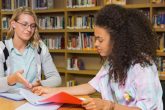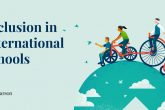
What’s actually going on in the teenage brain and what can we do to improve its health? Surely it’s all hard-wired now anyway? The answers to the above are: an awful lot; yes; and not at all actually!
In the last article we laid out the challenges faced by the education industry around mental health and the risks this poses to both teacher welfare and to the healthy future development of students. So what development is actually going on in the brain of a teenage student and is there really anything we can do to improve its health? And as for the teachers surely it’s all hard-wired now anyway? The answers to the above are: an awful lot; yes; and not at all actually.
The malleable brain
Let’s begin with the last question – the assumption that our brains, including our confidence and resilience, are hard-wired. Until relatively recently, scientists believed that there was little new brain matter created after the age of three, after which time the neurons slowly reduced. So in essence, even before you’d started school, they assumed your brain was like a baseball – solid, firm and all sewn up in how it was going to work for the rest of your life. What they have since discovered is neuroplasticity: the concept that our brains are in fact plastic and malleable, more like a ball of plasticine than a baseball. New neurons are created all the time and new activity in any area of the brain creates new matter there. Unless ill-health prevents it, this should stay the case until old age.
This means that any intervention to support and improve our mental health, including targeting our relationship with stress and negative thinking, is beneficial at any age, and can have a radical impact. If you have certain thinking habits and neural pathways at age 30, they might take a bit of time to redirect, but they are still changeable.
The teenage brain
However, when we look at the teenage student brain, it is a much less predictable place. Not only are their brains still developing new neural pathways, they are developing them in a way which is totally unique to their age. In the past decade, neuroscientists have made some fascinating discoveries1. In pre-puberty, around age 11 or 12, the frontal lobe, responsible for logical and rational thought, such as planning, organising and strategizing, has been shown to be building up neural connections at an exponential rate. It has commonly been described as a tree growing lots of branches in a short space of time1. Once the child hits puberty, these branches then start to thin out at a similarly exponential rate, depending on the areas of the brain the student is using most. In other words, they “use it or lose it”2. Towards the end of adolescence, the branches that are left then begin to thicken and grow in quality and strength. They spend half their teenage years losing the grey matter they do not need and the latter half strengthening the matter that they do.
This means that the area of the brain responsible for logical thought and decision-making is undergoing a major overhaul, at a time when students are expected to perform against standardised educational frameworks and make decisions about their futures.
From a social point of view, scientists have also identified interesting activity in the cerebellum (at the very top of the spine in the brain stem), which does not stop growing until well into our 20s. Initially thought to be responsible for physical co-ordination, more recently it has been linked to mental co-ordination too. Therefore, it is highly likely that a lot of the social clumsiness that teenagers experience is to do with an accentuated focus on development in the logical thought area without the co-ordination to be able to use it properly.
The evidence above supports how students can feel incapable of interacting logically with the expectations placed on them by the education system, nor of handling social challenges of the classroom and authority with grace. In essence, they are still working out who they are, at their very core. Whilst boundaries are helpful to feel safe, too much pressure and they can easily feel lost and unsupported, contributing to anxiety, stress and reduced self-esteem.
So what can we do to help?
Thanks to the brain shaping itself to deliver key skills for life, adolescence is actually a prime time to root in and grow self-esteem in our students. One of the ways we can do this is through using mindfulness to foster self-compassion, patience, and resilience against the flow of large emotions.
As a result of the factors described above, it’s easy to see why teenagers struggle to see the bigger picture beyond their school years – their brains simply aren’t ready to show them that foresight. Their emotions feel very large, their brains and emotional regulatory systems are changing rapidly, and so emotions can take on an all-consuming, identity-defining permanence.
Where mindfulness can help is to foster resilience to emotional changes by teaching them to face difficult feelings in the present moment and sit with them. It can teach them to notice their thoughts and feelings coming and going every day, without judgement, and help provide some perspective over how and when to respond to them.
In the context of their journey through school, we can use mindfulness to:
- help students gain awareness of how educational demands might be affecting their mood subconsciously.
- help them view the expectations in the context of an education system that seeks to help measure rather than define them.
- provide students with a safe space stepped back with the breath, to find perspective on the social and academic challenges they are navigating.
Teaching mindfulness in adolescence means they will likely carry those skills with them for life, leading to greater confidence and resilience in adulthood too.
In the next article, we will look at the practical application of mindfulness including some activities to carry out with your students and for your own self-care.
References
- Giedd, J. (2010) Inside the Teenage Brain. (Frontline, USA).
- Morgan, N. (2013) The Amazing Teenage Brain. (Walker, UK).
About the author
Amy Malloy is a freelance writer and editor, and the founder of No More Shoulds.com, teaching mindfulness for healthier, kinder minds. With 15 years’ experience in teaching and educational publishing, she now combines first-hand understanding with wellbeing practices to help educators and students find inner calm in a stressful world.

